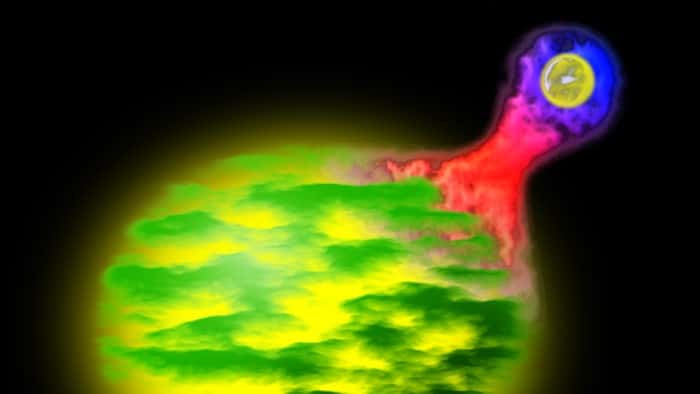
Physicists in Finland have created a pumpkin-shaped nucleus that has the shortest directly measured half-life of any ground-state proton emitter. The lutetium-149 nucleus is also the most oblate deformed proton emitter observed to date. The measurement improves physicists’ understanding of the rare decay mode of proton emission and could lead to better models that predict the properties of nuclei.
Studying radioactive decay provides a wealth of information about how protons and neutrons bind together to form large nuclei. Physicists have been studying alpha decay – which involves the emission of a helium-4 nucleus – for over a century and have learned much about the properties of nuclei. However, studying alpha decay has an important complication: physicists must understand both why the alpha particle forms within a nucleus and why it is emitted.
Although much more rare than alpha decay, proton emission only involves one nucleon and therefore offers a less complicated way of peering inside the nucleus. The first proton-emitting nucleus was spotted in the 1970s but it was not until 1982 when the first emission of a proton was observed from a nucleus in its ground state. This was lutetium-151 and researchers concluded that this nucleus had the highest known oblate deformation. An oblate shape is a squashed sphere that resembles a pumpkin.
Implanted nuclei
Now, an international team of researchers working at the Accelerator Laboratory of University of Jyväskylä are the first to create and study an even more oblate nucleus, lutetium-149. This has 71 protons and 78 neutrons and was observed decaying to ytterbium-148 via the emission of a proton. The lutetium-149 nuclei were created by firing nickel-58 nuclei at a thin ruthenium-96 target. The nuclei of interest were isolated using the facility’s Mass Analyzing Recoil Apparatus (MARA) and then implanted within a silicon strip detector.

Helium-8 nucleus has unexpected rugby-ball shape
The team observed 14 fast decay events in the detector that corresponded to a half life of about 450 ns for lutetium-149. The detected protons had an energy of about 1.9 MeV, which means that lutetium-149 has the highest ground-state proton-decay energy ever measured. The team compared their measurements with the predictions of several models that predict the ground-state masses of nuclei. They found that these models tend to underestimate estimate the proton-decay energy.
Writing in Physical Review Letters, the researchers suggest that lutetium-149’s extreme oblate distortion could be further studied by observing gamma rays emitted by nuclei – although they say this would be very challenging. Another difficult experiment suggested by the team is the creation and study of lutetium-148, which they say may have a longer lifetime than lutetium-149.
